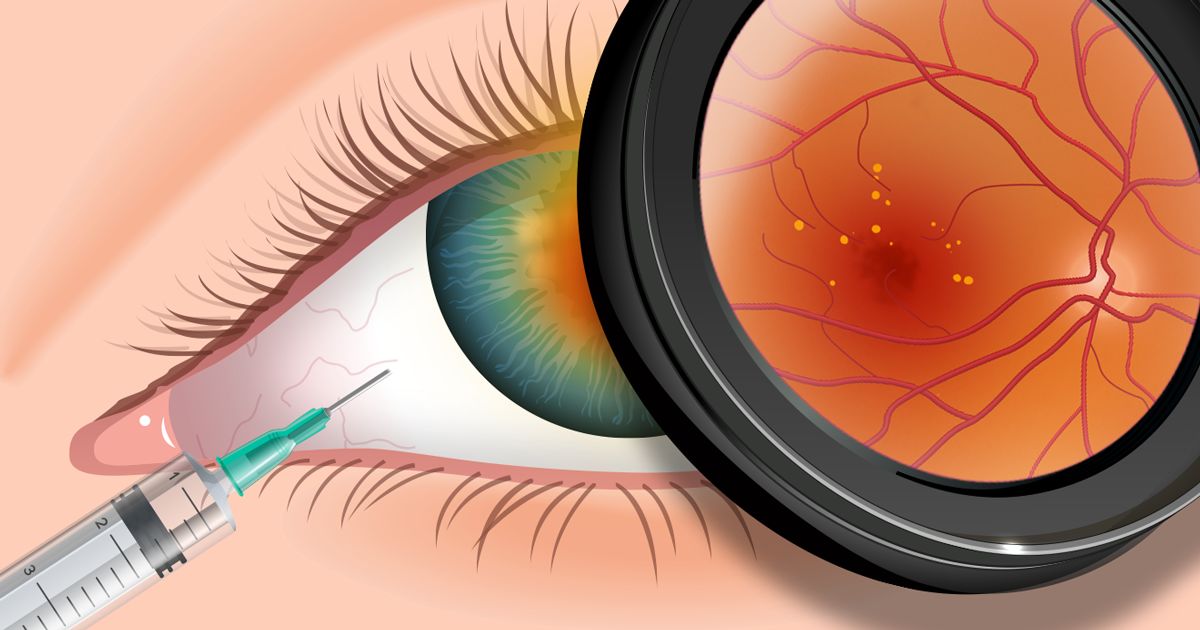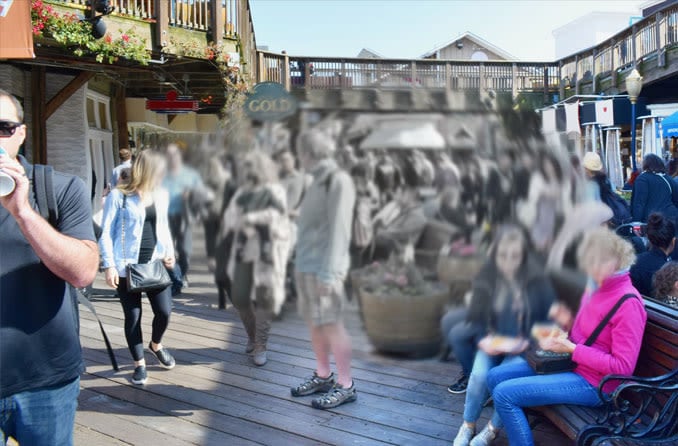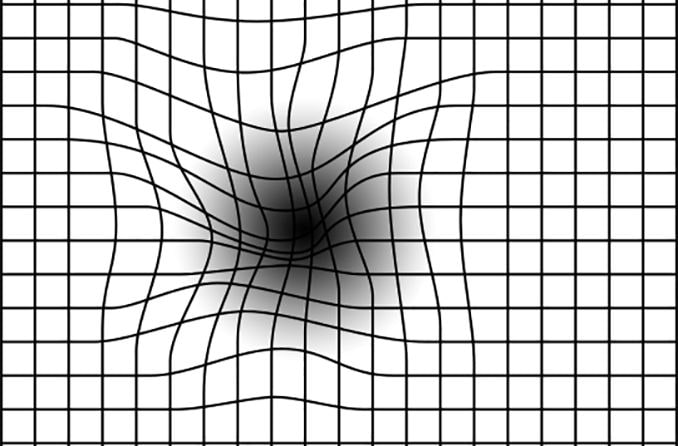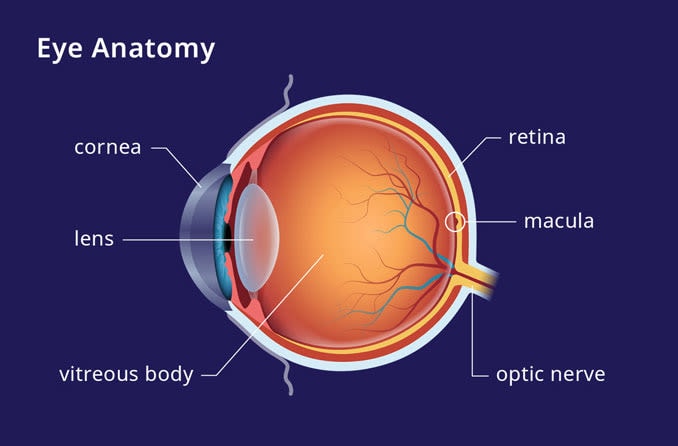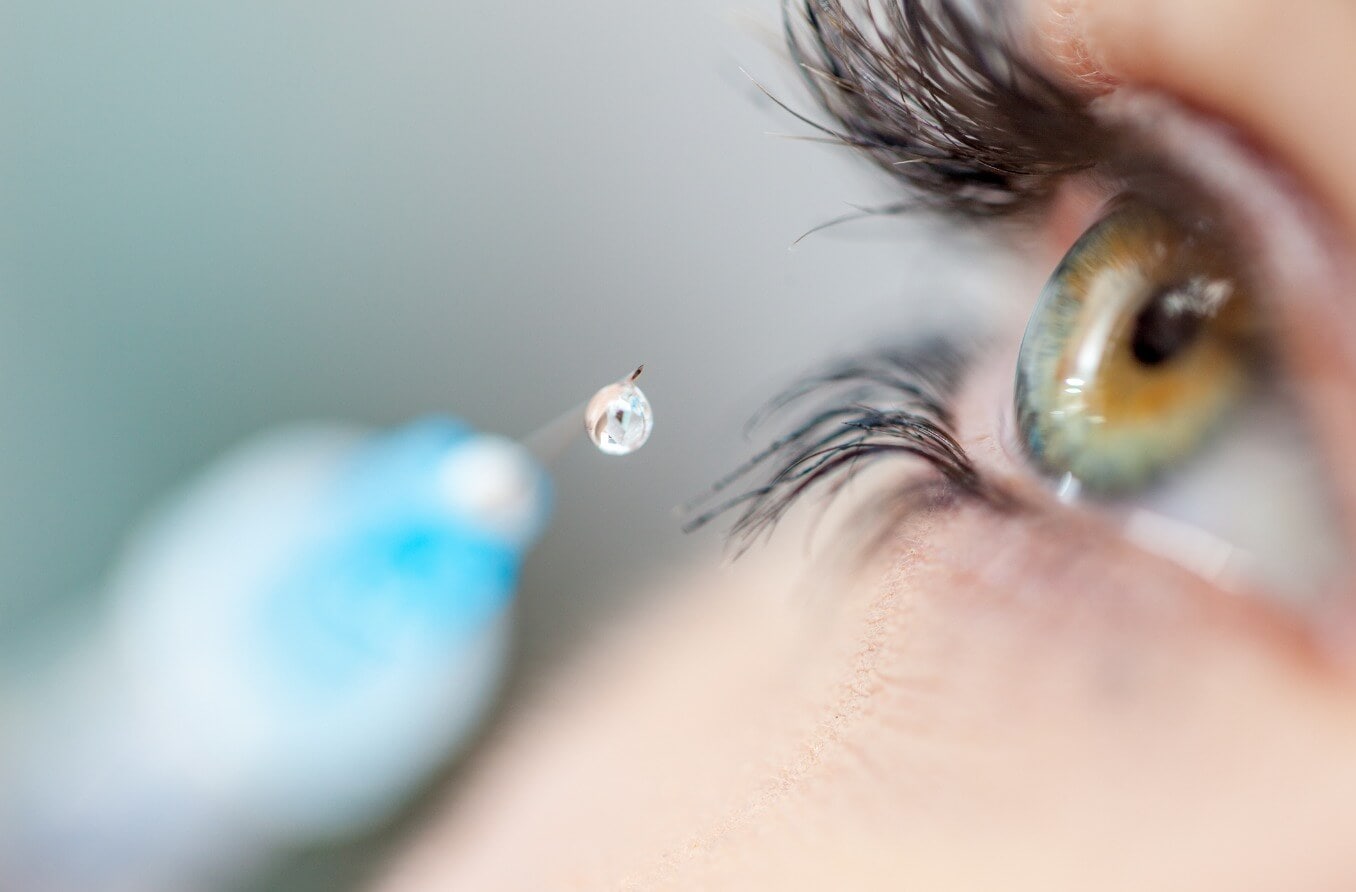Avastin (bevacizumab) is a prescription injection used to treat wet age-related macular degeneration (AMD). It is both highly effective and affordable. But it is used off-label by many eye doctors as Avastin is currently only FDA-approved as a treatment for colon and other cancers.
Avastin for macular degeneration vision loss
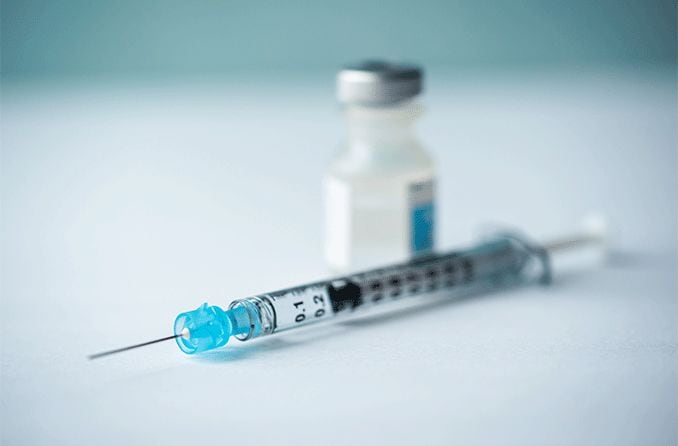
On this page:
What is age-related macular degeneration?
Symptoms of macular degeneration
Who is at risk for macular degeneration?
Treatment for wet AMD with Avastin
What happens when you get an Avastin injection?
Are there risks and side effects to Avastin treatment?
Which is better, Avastin or Lucentis?
What new treatments are on the horizon?
Always get regular eye appointments
On this page:
What is age-related macular degeneration?
Symptoms of macular degeneration
Who is at risk for macular degeneration?
Treatment for wet AMD with Avastin
What happens when you get an Avastin injection?
Are there risks and side effects to Avastin treatment?
Which is better, Avastin or Lucentis?
What new treatments are on the horizon?
Always get regular eye appointments
What is age-related macular degeneration?
Age-related macular degeneration (also known as AMD or ARMD) is one of the leading causes of vision loss in people 50 years and older. Over time, central vision becomes blurry and colors may fade.
AMD gets its name from the macula, the central portion of the retina in the back of the eye. The macula is responsible for visual sharpness, most of our color vision and central vision. When the macula is damaged by AMD, an individual can lose central vision, and objects may look blurry. Although peripheral (side) vision remains clear. Total blindness is rare in AMD. According to the Centers for Disease Control and Prevention (CDC), 1.8 million people have AMD and another 7.3 million are at substantial risk for vision loss from AMD.
There are two forms of age-related macular degeneration, dry and wet. The “dry” form is the most common and causes gradual vision loss. The “wet” form is considered more serious and occurs when fluid and blood leak from newly formed blood vessels growing under the macula. This leads to scarring that blurs central vision. Vision loss can be rapid.
Only about 10% to 20% of macular degeneration is wet, but it is responsible for 90% of legal blindness cases. Legal blindness is defined as vision that is 20/200 or worse.
AMD can occur in one or both eyes and may affect each eye differently. The wet form is often treated with Avastin injections.
Symptoms of macular degeneration
In its early and intermediate stages, these are some signs of AMD:
- Increasing haziness of vision
- Shape of objects appears distorted
- Straight lines look wavy or crooked
- Clear color vision fades
- Blank spots in central vision
AMD is diagnosed by an ophthalmologist, who during an eye exam will see the presence of yellow deposits beneath the retina. These are called drusen. In late AMD, vision loss is noticeable to the individual.
Who is at risk for macular degeneration?
Though scientists are still trying to understand the precise causes of AMD, they do know that you are more at risk if you:
- Have a family history of AMD.
- Are Caucasian.
- Eat a diet high in saturated fat.
- Smoke cigarettes.
- Are overweight.
- Suffer from hypertension (high blood pressure).
- Are over 50 years old.
- Suffer from heart disease.
Treatment for wet AMD with Avastin
Avastin (bevacizumab) is a medication that is FDA-approved to treat colon and other cancers. It blocks a protein called vascular endothelial growth factor (VEGF), which the body uses to help blood vessels grow. By blocking VEGF, Avastin is able to slow the abnormal growth of blood vessels that may contribute to the spread of certain cancers.
In 2005, specialists at the University of Miami studied Avastin for wet AMD. Their first 12-week study found that it was well-tolerated and improved vision.
Since that time the medication has been used “off-label” to treat wet AMD, as well as diabetic eye disease and other diseases of the retina where there is abnormal blood vessel growth. The FDA allows off-label drug use if doctors know the risks and benefits and if studies prove the drug is helpful. Many studies have proven that Avastin is safe and effective for certain eye diseases.
Avastin is injected into the vitreous membrane in the back of the eye. It is able to block the growth of abnormal blood vessels in the retina that cause the disease.
What happens when you get an Avastin injection?
Having an injection in your eye sounds unpleasant, but when you get an Avastin injection your ophthalmologist will numb your eye so you don’t feel pain.
Before the procedure, your ophthalmologist will clean your eye with a solution that prevents infection. They will then position an eyelid holder on your eye so that you don’t have to worry about blinking. Your eye will then be numbed with drops, gel or perhaps an injection.
Your eye doctor will ask you to look up as he or she injects the medication with a small, thin needle. At most, you will feel some pressure or discomfort for a few seconds. You may also see a web of lines as the medicine spreads through the fluids in your eye.
Injections are typically needed every four to six weeks for several months. Your ophthalmologist will determine the specifics of your treatment.
Are there risks and side effects to Avastin treatment?
Every treatment can have side effects. Common side effects experienced with Avastin include:
- Eye redness and discomfort
- A feeling that something is in your eye
- Temporary blurry vision
- Eye floaters
More serious side effects are very rare but include:
- Light sensitivity (photophobia)
- Pain in the eye
- Swelling inside the eye
- Infection
Which is better, Avastin or Lucentis?
The innovative pharmaceutical company Genentech makes Avastin (bevacizumab). They also make a medication called Lucentis (ranibizumab), which is FDA-approved for treatment of wet AMD. Both are injected directly into the back of the eye. However, Lucentis costs more than $2,000 per treatment, while Avastin costs less than $150 per treatment. Even when covered by insurance, copay costs for Lucentis can be pricey.
The National Eye Institute sponsored a study called the Comparison of Age-Related Macular Degeneration Treatments Trials (CATT) to compare Avastin and Lucentis in the treatment of wet AMD. Avastin was found to be equivalent to Lucentis when used in similar dosing regimens. In fact, for both medications, at least 60% of patients attained visual acuity that met or exceeded the legal standard for driving vision (20/40 or better).
Some eye care practitioners prefer to use Avastin off-label for AMD treatment because it is more cost-effective for their patients. Other eye doctors prefer Lucentis because the drug has undergone clinical trials with verifiable results for macular degeneration.
Yet another drug that is FDA-approved for wet AMD is Eylea (aflibercept). Both Lucentis and Eylea are delivered in:
- Single-use packaging, with each sterile dose wrapped and sealed.
- Sterile injection kits that doctors can use and discard.
- Dosing for one-time use.
Because Avastin is used off-label, a compounding pharmacy can purchase and repackage the medication for appropriate use and dosage in the eye. Because it has been repackaged, occasionally the packaging has not been sterile. In 2011 this led to a cluster of eye infections. Your eye doctor will monitor your eyes closely for any sign of infection.
What new treatments are on the horizon?
From eye drops to gene therapy, exciting new treatments are on the horizon for wet AMD.
In new research, patients with wet AMD experienced better vision, which was maintained for 36 months after a single treatment of gene therapy. This was, however, a small study of nine patients at a single center, and additional research into gene therapy is ongoing.
Gene therapy works by replacing or turning off the genes that contribute to the abnormal blood vessel growth that leads to wet AMD.
In a 2014 study in animals, researchers found that they could use eye drops to deliver Avastin to the back of the eye, where it’s needed, by packaging the medication in tiny nanoparticles.
If studies in humans show good results, eye drops will revolutionize wet AMD treatment, allowing patients to avoid eye injections. However, this research is still in its early stages, and injection of Avastin is the standard of care.
Always get regular eye appointments
Research shows that individuals suffering from macular degeneration who miss appointments with their eye doctor have worse visual outcomes. It is important to have regular visits with an ophthalmologist. He or she can recommend a plan of treatment and watch for progressive signs of AMD before you experience significant vision problems.
READ NEXT: Keeping AMD appointments leads to better visual outcomes
On this page:
What is age-related macular degeneration?
Symptoms of macular degeneration
Who is at risk for macular degeneration?
Treatment for wet AMD with Avastin
What happens when you get an Avastin injection?
Are there risks and side effects to Avastin treatment?
Which is better, Avastin or Lucentis?
What new treatments are on the horizon?
Always get regular eye appointments
On this page:
What is age-related macular degeneration?
Symptoms of macular degeneration
Who is at risk for macular degeneration?
Treatment for wet AMD with Avastin
What happens when you get an Avastin injection?
Are there risks and side effects to Avastin treatment?
Which is better, Avastin or Lucentis?
What new treatments are on the horizon?
Always get regular eye appointments
